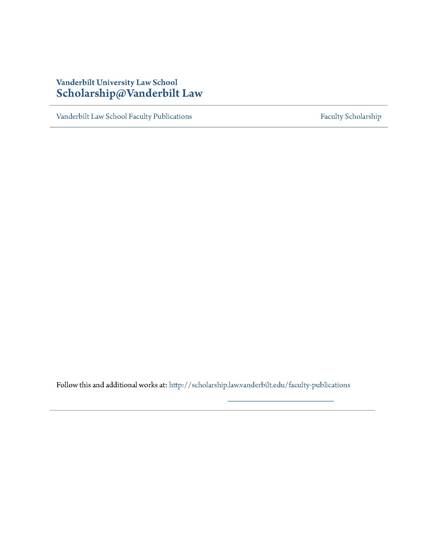
- criminal justice,
- civil rights,
- federalism
One of the most remarked-upon events of the recent past is the August 2014 death of a black teenager, Michael Brown, at the hands of a white police officer, Darren Wilson, in Ferguson, Missouri. Attention initially focused on individual actions and local circumstances, but quickly expanded to a broader set of injustices. Brown died just days before he was scheduled to start college, a significant accomplishment in his local context. His school district's graduation rate was less than 62 percent, compared to 96 percent in a wealthier district down the road, belying Missouri's constitutional commitments to public education and equal protection, and calling into question federal efforts to 'leave no child behind' in the new millennium. I An older federal commitment-to desegregation-had also bypassed Brown's community. Indeed, federal subsidies and regulatory choices, combined with the legacy of discriminatory, state-sanctioned zoning and real estate industry practices, had helped transform this formerly all-white suburb of St. Louis into a predominantly black "ghetto." Federal efforts to remedy these patterns (for example, through housing vouchers) had proven less successful. In other ways, federal power was unmistakably present on the streets of Ferguson. In the nights of unrest that followed Brown's death, police from nearby municipalities patrolled in camouflage, rode atop armored tanks, and launched tear gas into crowds, deploying equipment and tactics that flowed directly from federal grants and giveaways. The federal Department ofJustice also eventually intervened in Ferguson, after a grand jury declined to indict Wilson under state law. Applying federal civil rights law, the DOJ, too, declined to pursue an indictment, but condemned the Ferguson Police Department for "a pattern of unconstitutional policing" marked by "clear racial disparities." One way to understand Ferguson is through the lens of federalism-not federalism theory or federalism doctrine, but "federalism in practice." In Brown's life, as in his death, we see the workings of a complex polity, in which responsibility for particular functions of government spans multiple levels of authority, in intricate and historically determined ways, and with unequal impacts on citizens. Our essay is about that federalism-about the legal distribution of power within the U.S. federal system, the ways that actors at different levels of government actually exercised their power, and the consequences of those choices for the human experience of governance. In what follows, we discuss recent legal-historical scholarship (including our own) that explores federalism-in-practice, focusing on the 20th century. We also explain why we hope to see more such scholarship in the future.
Available at: http://works.bepress.com/sara-mayeux/3/
